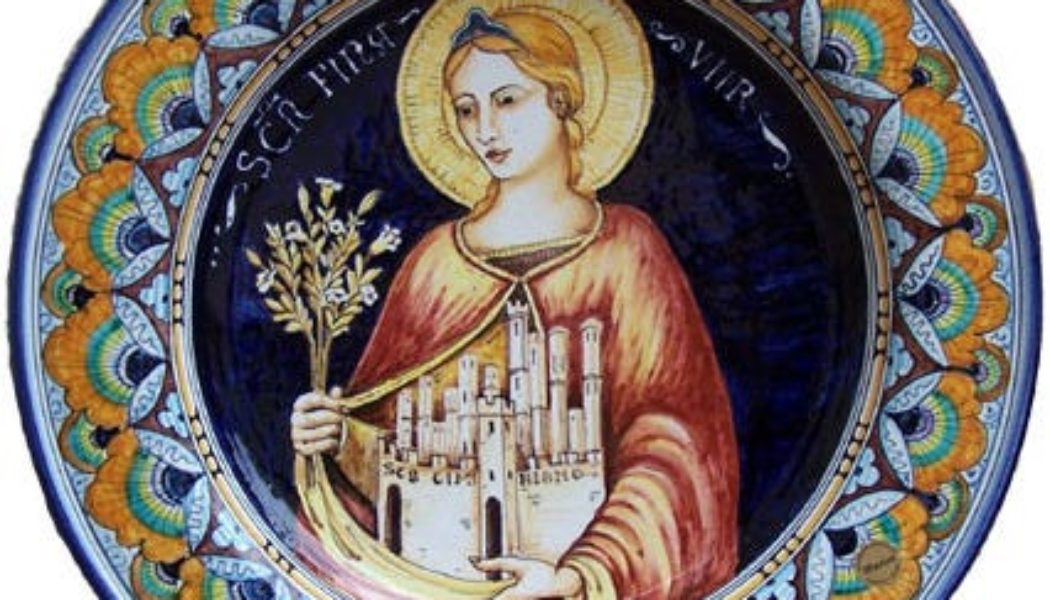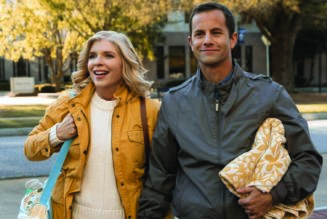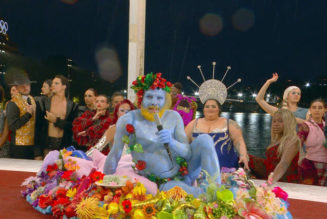Hey everybody,
You’ve survived Daylight Savings Time, and now you’re reading The Tuesday Pillar Post.
As it happens, today the Church traditionally commemorates St. Fina, who died at 15 in the year 1253.
When she was 10, Fina contracted a serious illness, which left her paralyzed. Lying on her back, she developed sores across her body. Then Fina’s parents died.
You might expect that such a person would withdraw into resentment or bitterness at the cross they’d been given. Fina was almost certainly tempted that way.
But she was given a remarkable grace. Fina saw in her suffering an invitation to unity with Christ. She learned, little by little, to offer her sufferings to the Lord, for the salvation of the people who visited her and cared for her.
This wasn’t easy, and she likely faced frequent periods of discouragement and depression. But according to her biographers, Fina learned that her suffering could become a locus of divine intimacy. And as she offered it up to the Lord, she became a conduit of grace, a ray of light, and a confidante to people who visited her, and asked for her prayers, and counted on her consolation.
Fina died on March 12, 1253. When her body was removed from the pallet on which she had lain, people said they saw white violets blooming from the wood, and were surrounded by the smell of flowers. Is that part true? I don’t know.
But what is true is that God has redeemed us in his suffering, and redeemed suffering itself. If you’ve never read it, let me commend to you for the rest of Lent reading the little JPII encyclical Salvifici doloris. I’ve gotten a lot from it, and you might too.
And also, I hope you see some violets today. That would be pretty cool.
St. Fina of San Gimignano, pray for us.
The news
The Vatican press office has been working overtime to argue that when the pope used the image of a white flag, he was just echoing the words of his interviewer, and did not mean to imply Ukrainians should surrender to Russia in the name of peace.
But in Ukraine, that explanation hasn’t gained much traction, with critics saying that the pope is echoing Russian propaganda points about the war.
To go deeper on this story, The Pillar talked over the weekend with Ukrainian leaders about their perception of the pontiff’s remarks. Some were quite blunt.
One professor at the Ukrainian Catholic University said that the pontiff’s “words, emphasizing a white flag and defeat, position him not on the side of the afflicted and beaten, but on the side of the robbers from the parable of the Good Samaritan.”
“The world that would emerge as a result of such negotiations would be a world marked by complete cynicism, where international law has ultimately lost its force,” the professor said. “In this scenario, the powerful can launch attacks and then legitimize their gains at the negotiating table. This raises critical questions about justice and accountability.”
So what will the Vatican do now? And how could this impact the pope’s efforts to help negotiate peace in the region?
There are nine dioceses in Nicaragua, and, at present, five are either vacant, led by a bishop beyond retirement age, or led by a bishop who has been exiled by the government. The country’s apostolic nuncio was also exiled from the country, leaving Nicaragua’s ecclesiastical hierarchy rather hollowed out.
In that situation, Brenes is a complicated figure — with some Nicaraguans accusing him of being too soft on the regime of President Daniel Ortega, and others arguing that the cardinal is trying to make the best of a bad situation.
But amid all that, Pope Francis has some decisions to make about whether to allow the status quo to continue across Nicaragua, or whether to make possibly controversial appointments, which could amplify persecution.
This is an important and complicated situation. The Pillar’s Luke Coppen broke it down.
The theft comes as documented cases of financial fraud in the Church are on the rise. But in many of those cases, it’s not clear that diocesan officials have responded to them with canonical sanctions.
That leaves some wondering whether financial crime in the Church will decrease, or if it might rise — especially as priests convicted civilly of theft often receive relatively light sentences, and no subsequent canonical penalties.
In covering this story, we talked with an expert on financial crime in the Church — and it’s a subject we’ll continue to cover.
The note, which is drawn mostly from the text of Vatican II’s Nostra aetate, is meant to help Catholics understand what the Church teaches about the Lord’s crucifixion, and what it doesn’t.
So how, and why, did the U.S. bishops’ conference decide to require the note? The Pillar talked with the USCCB’s Rebecca Cohen to find out.
While the priest was removed as a consultor to the Dicastery for Clergy, he remains listed as a consultor to the Dicastery for Divine Worship and the Discipline for Sacraments.
Seeking sanity from today’s political chaos? Look no further than The Dispatch. Founded by Jonah Goldberg and Stephen Hayes, The Dispatch offers trustworthy reporting and analysis that’s conservative but never partisan. Join 400,000+ readers who rely on journalism that prioritizes context, depth, and understanding. Subscribe today for a 90-day FREE trial.
Advertisement
If ‘Cabrini’ is for everyone, is it for anyone? And is it for us?
Next, this weekend I was sent a review copy of “Cabrini,” the recently released biopic of St. Frances Cabrini, which has sparked a lot of conversation among Catholics in recent days.
Some Catholics have praised the film as an inspiring account of the life of an important American saint. Others have found the movie lacking.
Some have raised concern that the movie’s screenwriter and director played the same roles for 2023’s “Sound of Freedom,” a controversial and fictionalized biopic of Tim Ballard, who was once praised for efforts to combat human trafficking, and has been more recently fired by the anti-trafficking organization he once led, censured by the Mormon church, and now faces numerous allegations of sexual assault, which he denies.
I haven’t seen “Sound of Freedom,” and my review of “Cabrini” isn’t about that.
In truth, I watched “Cabrini” out of curiosity — I find the production and marketing of religious movies fascinating, largely because they’re often touted as important projects for evangelization, and then only actually seen or appreciated by people who already hold the faith.
I’ve yet to meet, for example, a single convert to Christianity who attributes his spark of faith to the 2014 Kevin Sorbo flick “God’s Not Dead,” or the 2016 Melissa Joan Hart sequel, “God’s Not Dead 2.”
But the “God’s Not Dead” franchise is now in production on its fifth movie, “God’s Not Dead: Rise Up,” which is slated to be released in October, and will feature Dean Cain, who once played Superman (on TV), reprising his role from the original 2014 film.
If they can make five movies, even with relatively low production budgets, there are clearly people who believe these films are doing some good, and are willing to pony up to see more of them put out.
Indeed, because movies like “God’s Not Dead 4: We the People” are box-office flops, producers depend for revenue on advancing the idea that supporting these projects is practically a duty for Christians, at least if they want to make converts in the theater, or to combat the libertine excesses of Hollywood.
Once people buy into the idea that religious movies make converts — or are important pushbacks against ever-encroaching secularism — they’re willing to help boost box office numbers by renting out theaters for free screenings, or by participating in “pay it forward” ticket campaigns, which punch up the number of tickets sold during opening weekend, and help give the movies traction.
Sometimes those “pay it forward” campaigns can be extremely lucrative, by the way, as they were for “Sound of Freedom.”
But that kind of marketing campaign depends on social momentum endorsements — namely, influencers and pastors urging that seeing/supporting/buying tickets for these movies is an evangelical imperative, and that everybody should climb aboard the movie train, or else be left out. Religious or not, viral marketing encourages more grassroots boosts for a product, from people who get the message that promoting it is what the cool people are up to.
Pretty soon, the product becomes a movement.
When boosting faith-branded content becomes an identity signal, there’s a lot of money to be made. And studios are willing to spend a lot on marketing that kind of thing — perhaps even more than is spent to make the actual content — because religious movies depend on religious people to stay afloat.
So with that background, I’ve wondered in recent days if the Catholic enthusiasm I’ve seen around “Cabrini” isn’t a popish iteration of the same thing — whether Catholic online enthusiasm for “Cabrini” isn’t actually a “grassroots” marketing scheme employed by religious PR firms, with Catholics effectively plugging “God’s Not Dead XVI: Pontiff Style.”
And the truth is, I don’t know. I still haven’t found a good answer to that.
But I watched “Cabrini” hoping that I would really like it — that it would be a great piece of storytelling, and that I would walk away believing that I’ve seen so many Catholic “influencers” enthusiastic about the movie simply because it was really, really good.
I also wanted to like it because I like the stories of the saints. In fact, I write about the stories of saints a lot in this very newsletter, because I think knowing about the lives of holy men and women can help buoy us up in faith, and remind us of how good God is to work through his disciples to accomplish great things.
Plus, I live near Cabrini’s very cool shrine outside of Denver, and I feel some kinship with her.
I wanted to like “Cabrini.”
I did not want to have a cynical take about a movie which a lot of nice people say is inspiring and even “important.”
Most important, for once in my career as a journalist, I just wanted to say nice things about something.
But I wasn’t a fan.
And I didn’t like Cabrini because I wasn’t really sure what it was trying to do — what kind of movie it wanted to be.
On the surface, it recounted the story of Mother Francesca Cabrini, as she left Italy, came to New York, cared for orphaned children, and faced insurmountable odds to fulfill her vocation. That’s all very nice.
But there were a few problems.
As we watched the film, Mrs. Flynn pointed out to me how many of the male characters seemed to be caricatures of chauvinism, paternalism, and racism: the story, over and over again, was that most men are the cause of Mother Cabrini’s difficulties.
There were some exceptions: A kindly doctor and a saintly pope, especially.
But an overarching theme of the movie was that in the days of yore, most men were jerks, and few were virtuous.
Now, listen, I’m very comfortable with the idea that Mother Cabrini faced sexism and racism in the Church because, let’s face it, many people today face sexism and racism in the Church.
But in “Cabrini,” the discrimination she faced was concentrated into a couple of composite characters who — in order to represent a lot of prejudice — had to ooze it from near every pore. This left those characters at times more like one-dimensional symbols than like people and that made the movie, to me, less interesting.
Further, to affirm that Mother Cabrini faced sexism, screenwriter Rod Barr had her say it a lot, pointing out to her sisters directly that they wouldn’t be able to rely on men to help them at any opportunity.
To me, that kind of talk seemed anachronistic and unbelievable. And it could seem to support a false vision of history in which the past was necessarily less morally enlightened than the present. Sure, it’s just a movie, but reductive views of history doom us to repeat it — when we make caricatures of the past, and then deem ourselves morally superior to them, we too easily miss the wickedness and snares set before us, in our own time.
—
Another thing I noticed about the movie is that Mother Francesca Cabrini, foundress of the Missionary Sisters of the Sacred Heart of Jesus, canonized saint, almost never talked like a Catholic.
Sure, she said grace before meals (though she and her sisters were depicted holding hands during grace, which seemed like an oddly American Protestant affectation for their religious community.)
But when she had the opportunity to talk as practicing Catholics do, she almost never did.
For example, as they prepared to go to America, Mother Cabrini told her sisters how hard the trip would be, and how hard the work would be in America. She also told them that they’d get almost no support from anybody (and most especially, not from any men.)
I expected that she’d tell them that they could only rely on God the Father, or on the Holy Spirit, or on the Blessed Virgin Mary. Maybe she’d even flash a bit of Eucharistic Revival piety, and say they’d have to depend on the Blessed Sacrament to get them through.
Instead, sainted Mother Cabrini told her nuns that when they got to New York, they’d have to rely on each other.
I hang around practicing Catholics, because I am one. That line just wasn’t convincing.
And later, when an on-the-verge-of-reforming prostitute told Mother Cabrini that no amount of water could make her clean, I expected that Cabrini would tell her about the water of baptism, or about Jesus Christ, the living water, and the power of God’s mercy in confession.
For an evangelist, “there’s not enough water in the world to make me clean” is like a fat, slow pitch right over the plate, just waiting for a Catholic to knock it out of the park.
Instead, Mother Cabrini told the would-be penitent that she was a “strong woman.”
“We have something in common,” Mother Cabrini said, “We are both survivors.”
That’s what she said. Then we went to another scene.
Seriously.
Either St. Francesca Cabrini, noted saint, was a truly terrible evangelist, or this movie downplayed her religious identity to make it more broadly appealing. And since the Catholic marketing I’d seen told me the movie was very evangelical, that kind of confused me.
So on Monday, I asked “Cabrini” screenwriter Rod Barr about that scene.
Barr was gracious enough to talk with me by phone, while he was getting his oil changed, even when it became clear that my interview was going to consist of asking him questions about scenes in the movie I found implausible.
On that one, he told me that he felt the need to make the scene more “universal,” and that the goal was “not just to touch those who are already faithful people,” but to “bring this woman — her heart and her faith— to the largest world population that we possibly could.”
Moviegoers who see “Cabrini” understand that she was motivated by her faith in the Lord, Barr said. “That’s so clear. And we don’t have to say it, because saying it too much turns a lot of people in the audience off.”
I was intrigued by that idea. Because it seemed that Barr wasn’t really trying to make “God’s Not Dead” after all.
In fact, as we talked, Barr explained to me that he had set out to write a movie — or even been commissioned to do so by the film’s executive producer — that “anyone and everyone could appreciate and be moved by.”
But moved to what? Absent the witness of Cabrini’s Catholic faith — in the obvious moments where she might preach the kerygma — to what would moviegoers be moved?
And if moving people requires taking the Catholic words out of Cabrini’s mouth, is the movie really bringing her “heart and faith” to anybody? Is it even about her anymore?
For his part, Barr explained to me that the movie’s goal, as he saw it, was “to make a movie about an amazing woman who happened to be a nun.”
Barr said his approach to St. Francesca Cabrini was inspired by an aphorism attributed to St. Francis of Assisi: “Preach the Gospel at all times. When necessary, use words.”
I should mention that St. Francis didn’t say that. The Seraphic Father understood that the transmission of the Gospel requires the use of words. But, in either case, this movie wasn’t trying to transmit the Gospel.
Instead, Barr would be edified, he said, “if this movie inspires people to think about how they serve others.”
He was encouraged that “people come away [from ‘Cabrini’] — atheists, agnostics, Jews, Buddhists, Catholics, evangelicals — everybody seems to come away from this movie with a sense of elevated purpose, and hope, and inspiration.”
(Again, I’m really grateful that Barr was willing to entertain my questions about the movie so graciously).
And for him, it seemed to me, Cabrini was meant to be a “triumph of the human spirit” movie. In our conversation, he compared it to “Rocky.” I’ve taken to picturing it like “Chariots of Fire,” but in religious habits, and without any running on the beach. I guess maybe more like “Cool Runnings,” then.
—
But to make a “universally” inspiring movie, it seemed to me that “Cabrini” took a potentially interesting person — St. Frances Cabrini — and made her basically boring.
How?
Because to make Sr. Cabrini universally appealing, the movie sanded off all her particularities — the stuff that actually made her who she was.
What makes Cabrini interesting is her confidence in a mystical relationship with the divine — and the drive that gave her to live a vocation.
If the Cabrini character’s faith is downplayed, what’s left? What’s a saint without her religion?
A do-gooder, it seems to me, who is singularly but inexplicably determined to care temporally for poor Italian children in New York, despite the misgivings of a bunch of sexist men, and a delightfully villainous John Lithgow.
And for me, that didn’t make for a very interesting movie.
In any bit of narrative storytelling, we’re engaged when the protagonist has a kind of transformation over the course of the story — when they start out one way, and then face some crisis or ethical dilemma, in which neither we nor they are sure what what will happen — and then when they come out a different person on the other side.
Take the story of the 1997 classic “Air Bud,” for example. When protagonist Josh finds Buddy the basketball-playing dog, he really needs both a dog and some friends. Josh has moved to a new town, his dad’s just died, and he’s grappling with bullying and isolation.
When Buddy becomes a basketball star and local celebrity, Josh rides his dog’s coattails to social acceptance. But when some bad guys claim ownership of Buddy, Josh has to learn a valuable lesson — that setting his friend free, to keep him safe, was more important than all the incumbent emotional, social, and athletic loss he’d suffer.
Josh undergoes a transformation, of sorts, before he and Air Bud go on to win the big game.
But Mother Cabrini doesn’t have that arc. At the beginning of the movie, she’s determined to help orphans — to build an “empire of hope” — for religious reasons which are alluded to but not specified.
At the end of the movie, she’s still determined to do the very same thing. In the two hours in between, she faces challenges — her health, her Church’s bureaucracy, anti-Italian racism in New York. But those things are externalities, and Mother Cabrini just powers right through each one of them, knocking past them with a pugilistic style and an arch of her eyebrow.
We see other characters have kind of transformational metamorphoses — most especially Archbishop Corrigan of New York — but Cabrini gets no such thing. To each problem, she sets her steely-eyed nerve, argues with some hapless official, and then gets to work. That’s it. She just… does.
Look, if you want to tell the story of “an amazing woman who happened to be a nun,” you’ve got to put some depth on her character.
That could have been done with more exploration of her faith, which would have had the virtue of being true to life.
There are probably other ways it could have been done, too. Barr told me he thought it was done by focusing on Cabrini’s health — the “sense of frailty” that came from poor “health and impending death.”
Perhaps so. But I didn’t see it. Where he saw a character arc, I saw a linear progression — a bound and determined figure who let no obstacle stand in her way, ever, under any circumstances.
An unflinching hero of universal and unspecified charity, mixed with a healthy dose of ego, a fighting spirit, and no interior self-doubt, or self-reflection, or lessons to learn.
That just didn’t grab me.
Now you might think I’m being unfair, but here’s what I was left with:
Despite the marketing, “Cabrini” says it is self-consciously meant not to be the kind of religious movie that excites the converted, or that makes converts.
But it’s not really a character-driven story that explores human complexity — including or excluding faith — either, or that even deeply explores this particular person.
She’s rounded off to appeal to the least common denominator, but that makes her too shallow to actually be very appealing.
So what movie actually is it? An inspiring tale about a lady we never really get to know.
Cabrini is aesthetically beautiful, and I loved the music.
But in her film, Cabrini insisted that the children she cared for deserved the best, no matter the cost. The saint deserves that too. And her movie just didn’t deliver.
Archepiscopal birthdays
Finally, Archbishop Jerome Listecki of Milwaukee turns 75 today — one of 15 U.S. diocesan bishops to turn 75 this year, including several archbishops: Listecki, Cardinal Cupich, Cardinal DiNardo, Archbishops Naumann, Rodi, Lucas, Aymond, and Blair.
By this time next year, we’ll add to the list Cardinal Dolan, who turns 75 next February — he’ll be one of 13 U.S. diocesan bishops to reach retirement age next year.
The massive turnover of diocesan archbishops reaching 75 — along with numerous diocesan bishops — is part of the most acute of episcopal turnover in American history. And we’ve written before at The Pillar at the likelihood that the turnover could also signify a change of theological perspective among the metropolitans as a body.
But it’s worth noting, I think, that the turnover is probably not going to happen as quickly as some expect. We know already that as many as one-third of diocesan episcopal candidates are turning down the job when asked — and it’s reasonable to assume that diocesan bishops are similarly reluctant to become metropolitans. So I suspect we’ll actually see several of those 75-year-old archbishops serve past their 76th or 77th year, even.
Nevertheless, a big episcopal shake-up has begun, even if it unfolds slowly. That will doubtless impact the Church for decades to come.
—
Please be assured of our prayers. And please pray for us — we need it.
And if you love The Pillar, please subscribe:
Yours in Christ,
JD Flynn
editor-in-chief
The Pillar
Seeking sanity from today’s political chaos? Look no further than The Dispatch. Founded by Jonah Goldberg and Stephen Hayes, The Dispatch offers trustworthy reporting and analysis that’s conservative but never partisan. Join 400,000+ readers who rely on journalism that prioritizes context, depth, and understanding. Subscribe today for a 90-day FREE trial.
Advertisement
Comments 51
Services Marketplace – Listings, Bookings & Reviews











